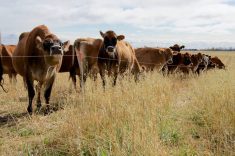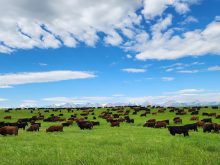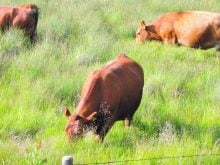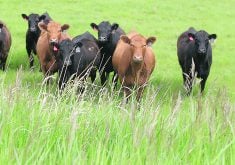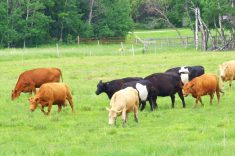Cattle producers and grain growers who enter into grazing partnerships are urged to write a rock-solid agreement
Working with crop farmers may be one answer for cattle producers struggling with feed shortages.
Kevin Elmy told the recent Advancing Organics conference in Saskatoon that he started looking for alternative management practices when he moved back to the family seed operation near Saltcoats, Sask., in 1999.
What he came up with was a partnership with a neighbouring cattle producer.
“He knows his herd. He can come in and he can manage it,” Elmy said.
“As an agronomist, I’m growing plants. He’s coming in, instead of me running a combine over it, we’re bringing the cows in and we’re going to harvest it that way. He’s short of feed, I’m able to produce feed, he brings the cow over, does his grazing, he pays me a set rate, whatever we decide to come up with.”
Read Also
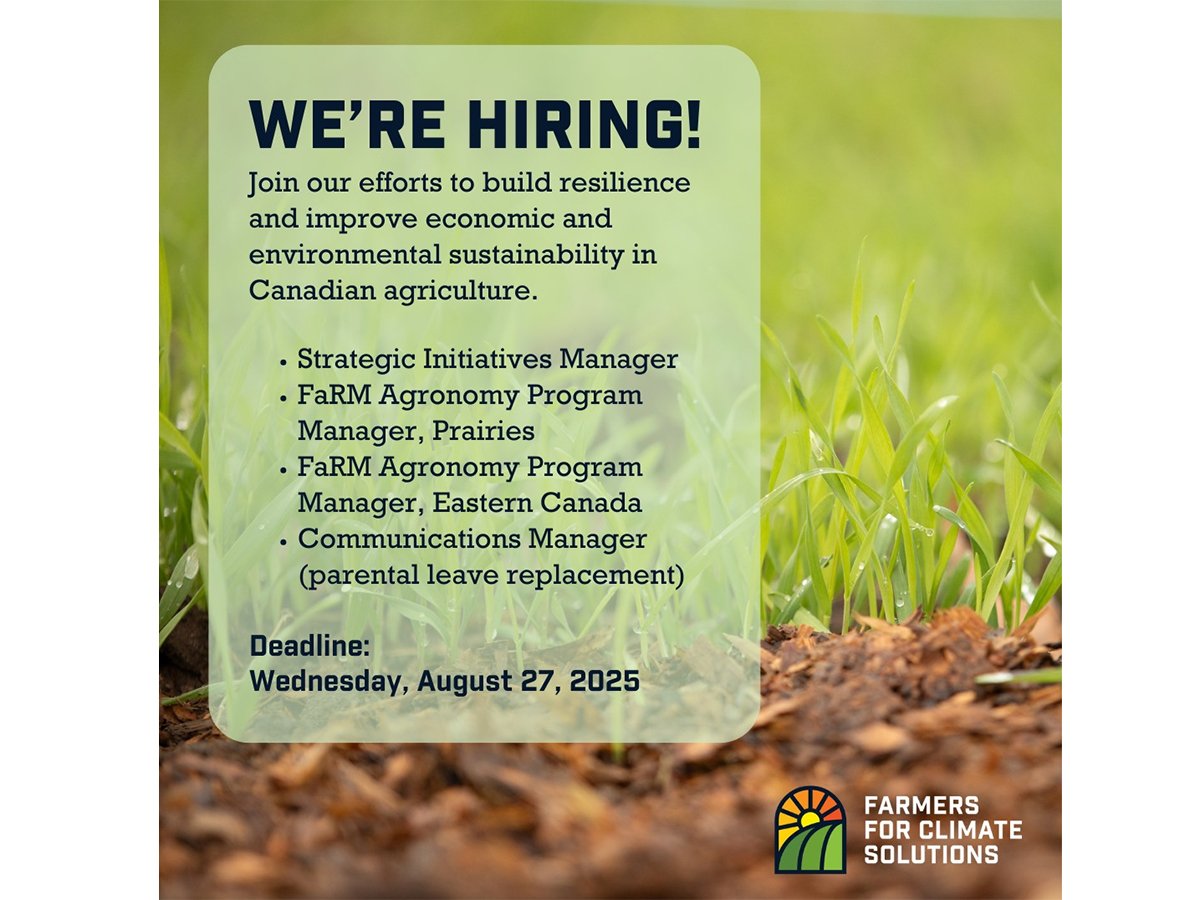
Environmental farm group has Ottawa’s attention
In 2021, Farmers for Climate Solutions published a report on how Canada should reduce emissions from agriculture. Not long after, the federal government implemented most of the recommendations in the report.
Elmy, who has published books about regenerative agriculture principles, said livestock grazing on his operation meant better soil health for his crops.
In the first year after leasing out land for grazing, he added, his corn crops were hearty without the need for additional inputs, fuel or disking.
Elmy, who now works for Imperial Seed Ltd., said the cattle brought in additional biomass with their manure and had access to an additional feed source, even in areas where he wasn’t able to seed.
He recalled one livestock producer who was extra appreciative when his cattle returned from grazing.
“We came up to our agreements in the fall, the person grazed all winter and in the spring he came back with a bonus cheque for me because the cows were in way better shape than the animals that he was feeding bales. He saw the value of it and he wanted to make sure that he stayed on my list to make sure I was happy.”
Elmy said building a relationship with livestock producers does require a black and white contract in which everyone knows their responsibilities. Questions of who is putting up fencing, hauling water or checking the herds during a blizzard should be answered long before the issue comes up on a cold January day.
“If it’s a win-lose, or a win-tie in these situations, someone isn’t going to be happy,” he said.
Sean McGrath, a livestock and ecosystem consultant based on his family farm, Round Rock Ranching, near Vermilion, Alta., agreed: “A good agreement should be written down and then you should never have to use it ever again,” he said.
Part of the agreement is financial compensation. McGrath said it costs money to graze cattle, and whether that’s on a per cow or per acre basis, it’s going to work out to so much per cow per day to manage the herd. That can also change later on as new graziers gain those vital skills, he added.
McGrath said livestock have been a great addition to his own operation, both as an additional income stream and a land management tool.
As well, there are different ways to manage both, he said. Putting hay bales on places with high erosion, such as hill tops, can ensure the biomass is going where it’s needed.
McGrath and his family have been using adaptive multi-paddock grazing since the early 1980s. Having multiple paddocks available, either permanent or temporary, means he can move livestock around depending on the number of animals, management goals and plant growth.
Allowing sections to be grazed and then recovered is driving carbon sequestration in the soil, he added.
“Once cows are on and they graze it, we can take them off, put them on a different paddock and then that paddock gives those plants a chance to recover from grazing. That’s what’s driving carbon into the soil and increasing yield across the whole farm. All those good environmental benefits come from that pulse of grazing that plant and then giving it a break.”



